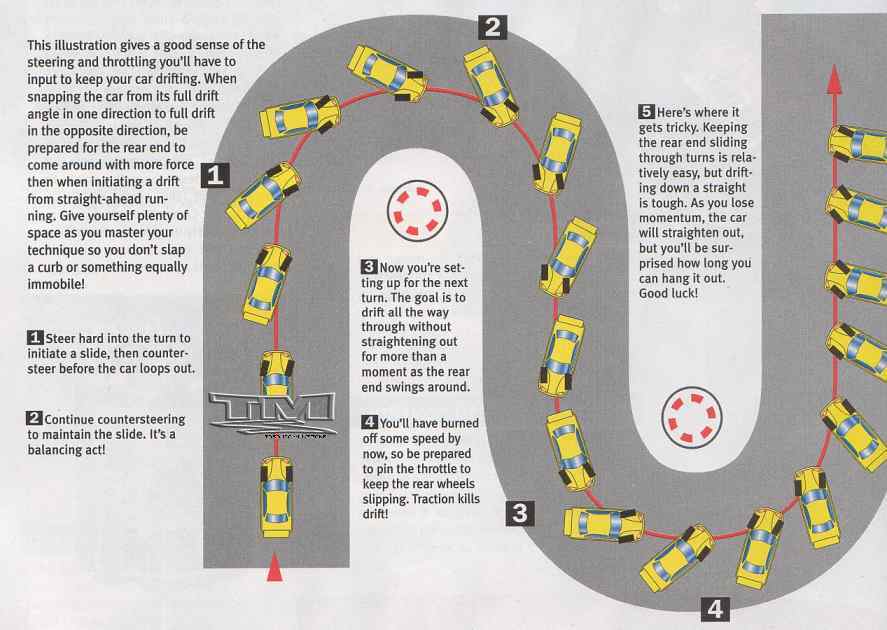The Physics of Drifting
Physics of Drifting:
The physics of drifting consist mostly of friction, acceleration, thermal energy, and
 .
.
FRICTION and ACCELERATION:
The surface condition of the roads depends greatly on how well your drift will succeed. If you have a wet rainy road there will be less friction allowing for less acceleration to start your drift. While on dry roads you have more friction, therefore more acceleration is needed. If you donít account for this important factor it can greatly alter your performance of the drift.
THERMAL ENERGY:
When drifting a vehicle, your tires are breaking contact with the surface of the road. Therefore the energy turns from kinetic energy to thermal energy in the tires. Eventually, as you keep drifting your tires wear out because the heat and friction eat away layers of the tire. Just after drifting your vehicle, your tires will be very warm due to thermal energy.

The whole point of drifting is to go around a corner at the fastest speed, without steering off the race track or road. We can find the force of the vehicle as it drifts around the corner as long as we have its mass, velocity, and radius of the turn. We can also solve for any of the variable by altering the formula to whatever we want to solve for.
This is a pictorial representation of drifting along with directions of how to drift around a corner.

http://www.driftsport.nl/UserFiles/Image/bocht-2.jpg
The physics of drifting consist mostly of friction, acceleration, thermal energy, and
FRICTION and ACCELERATION:
The surface condition of the roads depends greatly on how well your drift will succeed. If you have a wet rainy road there will be less friction allowing for less acceleration to start your drift. While on dry roads you have more friction, therefore more acceleration is needed. If you donít account for this important factor it can greatly alter your performance of the drift.
THERMAL ENERGY:
When drifting a vehicle, your tires are breaking contact with the surface of the road. Therefore the energy turns from kinetic energy to thermal energy in the tires. Eventually, as you keep drifting your tires wear out because the heat and friction eat away layers of the tire. Just after drifting your vehicle, your tires will be very warm due to thermal energy.
The whole point of drifting is to go around a corner at the fastest speed, without steering off the race track or road. We can find the force of the vehicle as it drifts around the corner as long as we have its mass, velocity, and radius of the turn. We can also solve for any of the variable by altering the formula to whatever we want to solve for.
This is a pictorial representation of drifting along with directions of how to drift around a corner.

http://www.driftsport.nl/UserFiles/Image/bocht-2.jpg